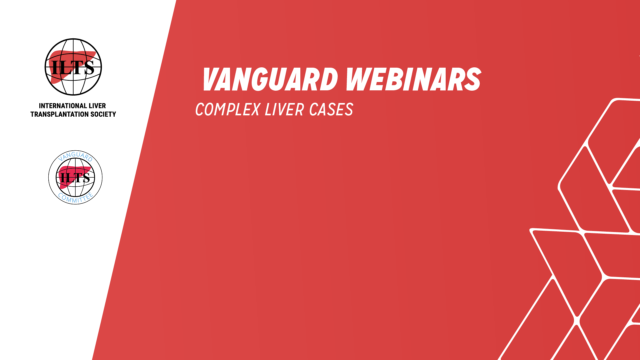Hepatology
Vanguard Reports: highlights of the Joint Congress of ILTS, ELITA & LICAGE, Lisbon 2018, edited by Prashant Bhangui (click above or below...)
ILTS/LICAGE/ELITA Prague 24-27 May 2017: Congress commentaries by Deniz Balci and Christian Toso
Presentations reviewed by Deniz Balci:
State of the Art lecture: Liver inflammation and immunology: from basic science to liver transplantation
Speaker: Frank Tacke
- Dr Tacke started with defining new concepts and roles of monocytes and macrophages which could be summarized as: impact homeostasis and inflammation, hepatocyte injury, hepatic stellate cell activation and angiogenesis.
- In liver, macrophage heterogeneity results with difficult immunological functions in disease progression as well as regression.
- Targeting macrophages could be via different methods namely microbubble, liposome or polymer in decreasing order of size of their respective particules.
- A proof-of-concept paper was published by Bartnect et al, showed decreased liver fibrosis using dexamethasone loaded liposomes. (Bartneck M, Warzecha KT, Tacke F. Therapeutic targeting of liver inflammation and fibrosis by nanomedicine. Hepatobiliary Surgery and Nutrition. 2014;3(6):364-376. doi:10.3978/j.issn.2304-3881.2014.11.02.)
- In another model of therapeutic targeting of monocytes in liver disease; LY6C high inflamatory macrophage becomes a fibrogenic macrophage that results with Hepatic stellate cell activation and extracellular matrix increase, while Ly6C low macrophage induces activated hepatic stellate cell apoptosis which may have a potential in reversal of fibrosis, showing potential benefit of therapeutic targeting of LY6C.
- The other cell line with various functions are Kupffer cells. Kupffer cell-mediated immunological tolerance to particulate antigens is abrogated in liver injury and fibrosis. They may assist in restoring antimicrobial surveillance in the early period after LT and promote tolerogenic actions in the long term.
- In liver transplantation, donor Kupffer cells may block activation before I/R injury occurs.
- Macrophages also take part in resolution of ischemia reperfusion injury in mice and man. There are various clinical implications.
- Monocyte-derived macrophages of the recipient are helpful in blocking infiltration after I/R injury
- After the transplantation, they could potentially be blocked to prevent graft fibrosis hence prevent disease recurrence.
- And, they may also counterbalance over-immunosuppression which may be helpful for HCC recurrence.
- Dr. Tacke concluded that, targeting monocyte/ macrophages can be therapeutic in liver diseases (e.g. CCR2/5 inhibitor in Nash fibrosis) which could be an interesting approach to novel interventions not only in chronic liver disease but also during and after liver transplantation.
Concurrent Oral Video Abstract Session:
Moderators: O Martin, K S Suh
Living Donor Liver Transplantation Using a Right Anterior Section of the Liver
Kyung-Suk Suh, Seoul, Republic of Korea
Dr Suh described a novel donor hepatectomy technique using right anterior section for the graft in LDLT for a recipient of 49-year-old male with BMI of 25. Donor volumetry was 0.57 for both the right posterior section and left hemiliver which were insufficient. The right anterior section was 710 ml with GRWR 0.96, with favorable portal and arterial anatomy hence selected as the graft. The total operation time was 292 minutes without transfusion and intra-operative complications. The middle hepatic vein of the right anterior section graft was anastomosed to the recipient's right hepatic vein and the rest were in standard fashion.
Dr. Suh concluded that despite being a complex donor operation with 2 parenchymal transection lines, this novel concept may expand the cadaveric donor pool and indication of LDLT.
A New Technique for Living Donor Liver Transplantation: Backtable Outflow Reconstruction and Bicaval Anastomosis with Veno-venous Bypass: Back to Basics
Deniz Balci, Ankara, Turkey
Dr Balci reported a new LDLT technique which simplifies outflow reconstruction and, at the same time aiming to increase safety for the recipient considered to be sensitive to hemodynamic instability due to systemic comorbidities.
The operation was divided into 3 steps: Hepatectomy without caval preservation and simultaneous veno-venous bypass (VVB) was set up using percutaneous femoral, internal jugular vein and portal vein cannulation. Back-table harvest of the recipient IVC from the diseased liver and new living donor graft outflow reconstruction. Finally, bi-caval anastomosis in the recipient before withdrawing VVB.
Dr Balci concluded that the technique may enable to simplify complex hepatic vein and caval anastomoses in LDLT using the VVB system under safe and hemodynamically stable conditions.
Pure Laparoscopic Living Donor Right Hepatectomy for Adult Liver Transplantation (4K, UHD)
Ki-Hun Kim, Seoul, Republic of Korea
Dr Kim presented a case of totally laparoscopic living donor right Hepatectomy. The donor was a 27 y.o woman with total liver volume of 1100 cm3 and right lobe was 630 cm3. Graft to recipient weight ratio was 0.82. The operation started with right hepatic artery and portal vein dissection. Parenchymal transection was completed using intermittent Pringle maneuver. The MHV was identified with intraoperative USG and tributaries from segments V and VIII were identified and divided. Finally, right bile duct was found and divided after performing intraoperative cholangiography with a mobile C-arm. The operation time was 300mins, and the estimated blood loss was less than 125ml. Graft weights were 610g Perioperative period was uneventful.
Dr. Kim suggested that the laparoscopic donor right hepatectomy is safe and feasible for liver transplantation, but should be performed in selected cases with a favorable anatomy in experienced centers .
Pure Right Lobe Donor Hepatectomy Using 3-D Laparoscopy for Adult-to-Adult Living Donor Liver Transplantation
Hye Ryeon Choi, Daegu, Republic of Korea
Laparoscopic-assisted Living Donor Right Hepatectomy
Adel Bozorgzadeh, Worcester, United States
Two more presentations were also reporting on a case of Laparoscopic Right Hepatectomy, Dr Choi from S.Korea presented pure laparoscopic right graft harvest using a Three-dimensional(3-D) imaging which they claim to enhance depth perception and facilitate operation. In Another presentation from the US by Dr Bozorgzadeh’s group, Hand-assisted laparoscopic right graft harvest technique was shown using a hand gelport placed on the right subcostal incision and three laparoscopic ports. The estimated blood loss was 500ml. The early postoperative course was uneventful for both the donor and recipient and they were discharged after 7 and 12 days, respectively. The authors concluded that hand-assisted laparoscopic living donor right hepatectomy is reproducible and can be safely performed.
Introduction of extrahepatic Glissonean approach for living donor hepatectomy
Taizo Hibi, Tokyo, Japan
Dr Hibi presented their extrahepatic Glissonean approach for living donor hepatectomy. The rational was to decrease bile duct injuries after living donor hepatectomy by both preserving blood supply of the hilar plate in the remnant liver by minimizing dissection and obtaining maximum margin of hilar structures for bile duct division. They defined 3 steps, Step 1. Isolation of the The right or the left Glissonean pedicle with an umbilical tape Step 2. Identification of hilar structures using Intraoperative cholangiography to find the point of bile duct division. Step 3 was Parenchymal division with modified liver hanging maneuver followed by division of hilar structures and graft retrieval. Dr Hibi concluded that extrahepatic Glissonean approach for living donor hepatectomy is safe and rational.
Laparoscopic Approach for Living Donor to Paediatric Liver Transplant
Javier Briceño, Cordoba, Spain
Dr Briceno reported their experience with 5 consecutive purely laparoscopic left lateral sectionectomy for adult-to-paediatric living liver donation, concluding that in specialized units, minimally invasive approach to living donor can be safely performed.
Presentations reviewed by Christian Toso:
Patient Selection and Organ Recovery: Oral Abstracts
Moderators: John O’Grady and Jaroslav Chiupac
Increasing Liver Transplant Waitlist Dropout for Hepatocellular
Carcinoma with Widening Geographical Disparities: Implications for
Organ Allocation
Neil Mehta, San Francisco, United States
This study, based on UNOS data, suggests that the risk of drop-out for HCC patients has increased greatly in the US in the recent years, and especially so in long wait-time regions. This data promotes creating regions with more homogeneous waiting times throughout the country, or tailoring exception MELD points according to wait time.
Liver Transplantation for HCC Patients with High AFP Level – How to Select?
WC Dai, Pokfulam, Hong Kong
This retrospective study of 330 patients transplanted for HCC demonstrated that AFP (< vs. >400) can predict post-transplant overall and disease-free survival.
Outcome of Liver Transplant Recipients after the First Episode of Bacterial Infection
Alberto Ferrarese, Padua, Italy
Single-center retrospective cohort study of 114 patients experiencing a bacterial infection on the waiting list, and match to 762 patients without infection (using propensity). SBP was the most common infection. Infection is associated with an increased short-term risk of death. Once having recovered, patients with infection did not show an increased risk factor of death on multivariate analysis.
The Objective Liver Frailty Index Significantly Improves the Clinician “Eyeball Test” to Predict Mortality in Liver Transplant Candidates
Jennifer Lai, San Francisco, United States
The Liver Frailty Index (grip strength, chair standing strength, balance testing) helps predicting the risk of death on the waiting list independently of MELD. Compared to the subjective assessment by hepatologists (1 to 5), the risk of death on the waiting list was better predicted using the Frailty index in 529 patients (and even more so when combining both with a c-statistics of 0.74).
Association of Cardiac Structural Abnormalities to the Frail Phenotype in Liver Transplant Candidates: From the Functional Assessment in Liver
Transplantation (FrAILT) Study
Lorena Puchades, Valencia, Spain
Frailty index correlates with the cardiac structural and functional impairments on TTE (including left chamber measurement, ejection fraction) in a cohort of 374 patients.
Normothermic Regional Perfusion (NRP) Improves Outcomes after Liver Transplantation from cDCD Donors
Gabriel Oniscu, Edinburgh, United Kingdom
In Scotland, livers of DCD donors are not used as often as in other part of the country. In order to improve this issue, a team has been flying with a machine in 45 donors in order to perform regional perfusion (similar to ECMO). Comparing a subgroup of 14 patients with NRP and 45 standard DCD, NRP was associated with lower post-transplant ALT, no cholangiopathy (vs24% in the standard DCD group), no primary non-function (vs. 4 in the standard DCD group), and better graft survival (p<0.05). In the audience, a member from the Bilbao team confirms similarly good results at his institution.
Human Liver Transplantation after Normothermic Machine Perfusion (NMP), the First Report in the United States
Qiang Liu, Cleveland, United States
Phase 1 trial of liver graft NMP of 2 to 18 hours prior to transplantation, with perfusion of both the artery and the vein. After 10 transplantations, including 2 DCD, only one patient demonstrated early allograft dysfunction (one of the two transplants from DCD).
The Impact of Hypothermic Oxygenated Perfusion on Liver Viability Tested during Normothermic Machine Perfusion
Yuri Boteon, Birmingham, United Kingdom
Study of 10 discarded livers on HOPE (6 h) followed by NMP (2h, n=5) vs. on NMP (6h, n=5). HOPE effectively recharged cell energy, and increased the number of viable cells. The author suggests that both strategies could be combined in the future.
Repair on the Pump: Effective Delivery of Mesenchymal Stromal Cells (MSCs) to Liver Grafts during Isolated Machine Perfusion
Monique M.A. Verstegen, Rotterdam, Netherlands
The study infused GFP-expressing human MSCs into six pig livers on HOPE. The engraftment was similar with injection into the portal vein vs. the artery (yet a bit better through the artery). After one hour of HOPE, the engraftment appeared stable (as assessed by qPCR). Answering to a question, the author proposes to infuse donor MSCs into the liver graft prior to transplant.
Patient Selection and Organ Recovery: Oral Abstracts
Moderators: John O’Grady and Jaroslav Chiupac
Increasing Liver Transplant Waitlist Dropout for Hepatocellular
Carcinoma with Widening Geographical Disparities: Implications for
Organ Allocation
Neil Mehta, San Francisco, United States
This study, based on UNOS data, suggests that the risk of drop-out for HCC patients has increased greatly in the US in the recent years, and especially so in long wait-time regions. This data promotes creating regions with more homogeneous waiting times throughout the country, or tailoring exception MELD points according to wait time.
Liver Transplantation for HCC Patients with High AFP Level – How to Select?
WC Dai, Pokfulam, Hong Kong
This retrospective study of 330 patients transplanted for HCC demonstrated that AFP (< vs. >400) can predict post-transplant overall and disease-free survival.
Outcome of Liver Transplant Recipients after the First Episode of Bacterial Infection
Alberto Ferrarese, Padua, Italy
Single-center retrospective cohort study of 114 patients experiencing a bacterial infection on the waiting list, and match to 762 patients without infection (using propensity). SBP was the most common infection. Infection is associated with an increased short-term risk of death. Once having recovered, patients with infection did not show an increased risk factor of death on multivariate analysis.
The Objective Liver Frailty Index Significantly Improves the Clinician “Eyeball Test” to Predict Mortality in Liver Transplant Candidates
Jennifer Lai, San Francisco, United States
The Liver Frailty Index (grip strength, chair standing strength, balance testing) helps predicting the risk of death on the waiting list independently of MELD. Compared to the subjective assessment by hepatologists (1 to 5), the risk of death on the waiting list was better predicted using the Frailty index in 529 patients (and even more so when combining both with a c-statistics of 0.74).
Association of Cardiac Structural Abnormalities to the Frail Phenotype in Liver Transplant Candidates: From the Functional Assessment in Liver
Transplantation (FrAILT) Study
Lorena Puchades, Valencia, Spain
Frailty index correlates with the cardiac structural and functional impairments on TTE (including left chamber measurement, ejection fraction) in a cohort of 374 patients.
Normothermic Regional Perfusion (NRP) Improves Outcomes after Liver Transplantation from cDCD Donors
Gabriel Oniscu, Edinburgh, United Kingdom
In Scotland, livers of DCD donors are not used as often as in other part of the country. In order to improve this issue, a team has been flying with a machine in 45 donors in order to perform regional perfusion (similar to ECMO). Comparing a subgroup of 14 patients with NRP and 45 standard DCD, NRP was associated with lower post-transplant ALT, no cholangiopathy (vs24% in the standard DCD group), no primary non-function (vs. 4 in the standard DCD group), and better graft survival (p<0.05). In the audience, a member from the Bilbao team confirms similarly good results at his institution.
Human Liver Transplantation after Normothermic Machine Perfusion (NMP), the First Report in the United States
Qiang Liu, Cleveland, United States
Phase 1 trial of liver graft NMP of 2 to 18 hours prior to transplantation, with perfusion of both the artery and the vein. After 10 transplantations, including 2 DCD, only one patient demonstrated early allograft dysfunction (one of the two transplants from DCD).
The Impact of Hypothermic Oxygenated Perfusion on Liver Viability Tested during Normothermic Machine Perfusion
Yuri Boteon, Birmingham, United Kingdom
Study of 10 discarded livers on HOPE (6 h) followed by NMP (2h, n=5) vs. on NMP (6h, n=5). HOPE effectively recharged cell energy, and increased the number of viable cells. The author suggests that both strategies could be combined in the future.
Repair on the Pump: Effective Delivery of Mesenchymal Stromal Cells (MSCs) to Liver Grafts during Isolated Machine Perfusion
Monique M.A. Verstegen, Rotterdam, Netherlands
The study infused GFP-expressing human MSCs into six pig livers on HOPE. The engraftment was similar with injection into the portal vein vs. the artery (yet a bit better through the artery). After one hour of HOPE, the engraftment appeared stable (as assessed by qPCR). Answering to a question, the author proposes to infuse donor MSCs into the liver graft prior to transplant.
ILTS Consensus Conference on Immunosuppression in Liver Transplantation
Park City, Utah February 7-8, 2017
A distinguished international faculty led by Michael Charlton and Josh Levitsky provided a state-of-the-art overview of current issues and progress in this field, soon to be summarized in an ILTS Consensus Statement and published in the official ILTS journal Transplantation.
Lectures and podcasts now available to ILTS members under Lectures...
The ILTS physician web administrator for the specialty sections is Dr John Klinck. To contact him with constructive comments and ideas on these sections use john.klinck@addenbrookes.nhs.uk.
-
** JC Review ** May-June 2023
For ILTS members only, please join now or renew your membership.
- Anesthetic management and 13 more ∙
- Christine Nguyen-Buckley ∙ Literature ∙ July 28, 2023
-
** JC Review ** Mar-Apr 2023: Liver Transplant and MELD Score
For ILTS members only, please join now or renew your membership.
- Anes/CCM and 10 more ∙
- Gebhard Wagener ∙ Literature ∙ June 11, 2023
-
Complex Liver Cases – February 2023
For ILTS members only, please join now or renew your membership.
- Other complications and 1 more ∙
- Artem Monakov and 4 others ∙
- Vanguard Webinars ∙ Webinar ∙ March 19, 2023
-
** JC Review ** Jan-Feb 2023
For ILTS members only, please join now or renew your membership.
- Acute liver failure and 4 more ∙
- Alexandra Anderson ∙ Literature ∙ March 12, 2023
-
ECLS in ALF management: tips and tricks
- Acute liver failure and 2 more ∙
- Florent Artru and 1 others ∙ Video ∙ March 1, 2023
-
ECLS in ALF management: Quick-fire interviews with experts from the ILTS ALF SIG
- Acute liver failure and 2 more ∙
- Akila Rajakumar and 3 others ∙ Video ∙ March 1, 2023
-
Report of the 24th Annual Congress of the International Liver Transplantation Society
For ILTS members only, please join now or renew your membership.
- Immunosuppression and 3 more ∙
- Alan Contreras and 10 others ∙
- 2018 Joint Congress of ILTS ∙ Literature ∙ February 3, 2023
-
Report of the 22nd Annual Congress of the International Liver Transplantation Society
For ILTS members only, please join now or renew your membership.
- DAA therapies for Hepatitis C and 2 more ∙
- Alessandro Vitale and 6 others ∙
- 2016 ILTS Seoul ∙ Literature ∙ February 3, 2023
-
** JC Review ** Nov-Dec 2022
For ILTS members only, please join now or renew your membership.
- Anes/CCM and 6 more ∙
- Annabel Blasi ∙ Literature ∙ December 25, 2022
-
Complex Liver Cases – December 2022
For ILTS members only, please join now or renew your membership.
- Complications and 6 more ∙
- Alexandra Shingina and 4 others ∙
- Vanguard Webinars ∙ Webinar ∙ December 19, 2022
-
ALF in children and adults
This content is only available to Web Visitors and ILTS members. Please sign up for...
- Acute liver failure and 2 more ∙
- Acute Liver Failure SIG and 2 others ∙ Video ∙ December 19, 2022
-
State-of-the-Art Lecture: Long-term outcomes in living liver donors
For ILTS members only, please join now or renew your membership.
- Living donor liver transplantation and 3 more ∙
- Hiroto Egawa and 3 others ∙
- State-Of-The-Art Lecture ∙ Webinar ∙ December 2, 2022
-
** Journal Club Review ** Sep-Oct 2022
For ILTS members only, please join now or renew your membership.
- Anes/CCM and 11 more ∙
- Ryan Chada ∙ Literature ∙ December 2, 2022
-
Complex Liver Cases – November 2022
For ILTS members only, please join now or renew your membership.
- Other complications and 2 more ∙
- Abdul Rahman Hakeem and 5 others ∙
- Vanguard Webinars ∙ Webinar ∙ November 22, 2022
-
Complex Liver Cases – August 2022
For ILTS members only, please join now or renew your membership.
- Complications and 2 more ∙
- Alessandro Galli and 4 others ∙
- Vanguard Webinars ∙ Webinar ∙ October 7, 2022
-
Complex Liver Cases – July 2022
For ILTS members only, please join now or renew your membership.
- Complications and 4 more ∙
- Cristina Dopazo and 9 others ∙
- Vanguard Webinars ∙ Webinar ∙ October 7, 2022
-
Complex Liver Cases – June 2022
For ILTS members only, please join now or renew your membership.
- Complications and 5 more ∙
- Amar Gupta and 5 others ∙
- Vanguard Webinars ∙ Webinar ∙ October 7, 2022
-
** Journal Club Review** Jul-Aug 2022 (2)
For ILTS members only, please join now or renew your membership.
- Anes/CCM and 13 more ∙
- Christine Nguyen-Buckley ∙ Literature ∙ October 5, 2022
-
**Journal Club Review** Jul-Aug 2022 (1)
For ILTS members only, please join now or renew your membership.
- Anes/CCM and 7 more ∙
- Fuat H. Saner ∙ Literature ∙ October 5, 2022
-
6th REAL Asia: Management of Post LT Complications in Recipients
For ILTS members only, please join now or renew your membership.
- Liver Transplantation and 5 more ∙
- Alfred Kow and 6 others ∙
- ILTS REAL ∙ Webinar ∙ July 16, 2022
-
Second ILTS Experts Podcast
- Anes/CCM and 7 more ∙
- Annabel Blasi and 2 others ∙ Podcast ∙ July 13, 2022
-
** Journal Club Review May-Jun 2022 **
For ILTS members only, please join now or renew your membership.
- Anes/CCM and 7 more ∙
- Gebhard Wagener ∙ Literature ∙ June 29, 2022
-
ILTS Expert Podcast: HOT Topics in Hepatology & Surgery from the 2022 ILTS Congress
This content is only available to Web Visitors and ILTS members. Please sign up for...
- Acute liver failure and 16 more ∙
- Carmen Vinaixa and 2 others ∙ Podcast ∙ June 24, 2022
-
Concurrent Oral Abstract Session: Basic Science / Translational Research II
For ILTS members only, please join now or renew your membership.
- Basic and Translational Research and 3 more ∙
- Burcin Ekser and 8 others ∙
- 2022 ILTS Istanbul ∙ Lecture ∙ May 7, 2022
-
Concurrent Oral Abstract Session: Donor Selection Criteria / Patient Selection / Organ Allocation
For ILTS members only, please join now or renew your membership.
- Hepatology and 1 more ∙
- David Victor and 5 others ∙
- 2022 ILTS Istanbul ∙ Lecture ∙ May 7, 2022
-
Concurrent Oral Abstract Session: Comorbidities and Liver Transplantation Outcomes
For ILTS members only, please join now or renew your membership.
- Anes/CCM and 2 more ∙
- Ahmed Souka and 8 others ∙
- 2022 ILTS Istanbul ∙ Lecture ∙ May 7, 2022
-
Plenary Abstract Session II
For ILTS members only, please join now or renew your membership.
- Basic and Translational Research and 4 more ∙
- Artem Monakhov and 8 others ∙
- 2022 ILTS Istanbul ∙ Lecture ∙ May 7, 2022
-
ERAS Session
For ILTS members only, please join now or renew your membership.
- Anes/CCM and 2 more ∙
- Albert Chi Yan Chan and 9 others ∙
- 2022 ILTS Istanbul ∙ Lecture ∙ May 7, 2022
-
Vanguard Surgical Video Session
For ILTS members only, please join now or renew your membership.
- Anes/CCM and 3 more ∙
- Andrew Bonham and 4 others ∙
- 2022 ILTS Istanbul ∙ Lecture ∙ May 7, 2022
-
Concurrent Oral Abstract Session: Anesthesia / Critical Care Medicine / Acute Liver Failure
For ILTS members only, please join now or renew your membership.
- Anes/CCM and 1 more ∙
- Ahmed Mukhtar and 8 others ∙
- 2022 ILTS Istanbul ∙ Lecture ∙ May 6, 2022
-
Concurrent Oral Abstract Session: Pediatrics
For ILTS members only, please join now or renew your membership.
- Hepatology and 3 more ∙
- Abdul Rahman Hakeem and 8 others ∙
- 2022 ILTS Istanbul ∙ Lecture ∙ May 6, 2022
-
ELITA Featured Symposium II: Medical Challenges in Liver Transplantation 2021
For ILTS members only, please join now or renew your membership.
- Anes/CCM and 3 more ∙
- Alejandro Forner and 4 others ∙
- 2022 ILTS Istanbul ∙ Lecture ∙ May 6, 2022
-
LICAGE Parallel Symposium III: Postoperative Challenges (Post-OP)
For ILTS members only, please join now or renew your membership.
- Anes/CCM and 2 more ∙
- Dmitri Bezinover and 5 others ∙
- 2022 ILTS Istanbul ∙ Lecture ∙ May 6, 2022
-
Liver Transplantation and Alcohol-Associated Liver Disease: Where Are We in 2022?
For ILTS members only, please join now or renew your membership.
- Anes/CCM and 3 more ∙
- Alexandre Louvet and 4 others ∙
- 2022 ILTS Istanbul ∙ Lecture ∙ May 6, 2022
-
Concurrent Oral Abstract Session: Immunosuppression and Infection (COVID-19)
For ILTS members only, please join now or renew your membership.
- Anes/CCM and 4 more ∙
- Carmen Vinaixa and 8 others ∙
- 2022 ILTS Istanbul ∙ Lecture ∙ May 6, 2022
-
Concurrent Oral Abstract Session: Living Donor Liver Transplantation
For ILTS members only, please join now or renew your membership.
- Anes/CCM and 3 more ∙
- Babu Raghavendra Yalakanti and 8 others ∙
- 2022 ILTS Istanbul ∙ Lecture ∙ May 6, 2022
-
Concurrent Oral Abstract Session: Donation After Circulatory Death and Machine Perfusion
For ILTS members only, please join now or renew your membership.
- Anes/CCM and 2 more ∙
- Angus Hann and 8 others ∙
- 2022 ILTS Istanbul ∙ Lecture ∙ May 6, 2022
-
Long-Term Immunosuppression: The Art of Balance
For ILTS members only, please join now or renew your membership.
- Basic and Translational Research and 2 more ∙
- Abraham Shaked and 6 others ∙
- 2022 ILTS Istanbul ∙ Lecture ∙ May 6, 2022
-
Circulating Signaling: Non-Invasive Diagnostic Biomarkers in Liver Transplantation
For ILTS members only, please join now or renew your membership.
- Basic and Translational Research and 2 more ∙
- Ali Zarrinpar and 5 others ∙
- 2022 ILTS Istanbul ∙ Lecture ∙ May 6, 2022































